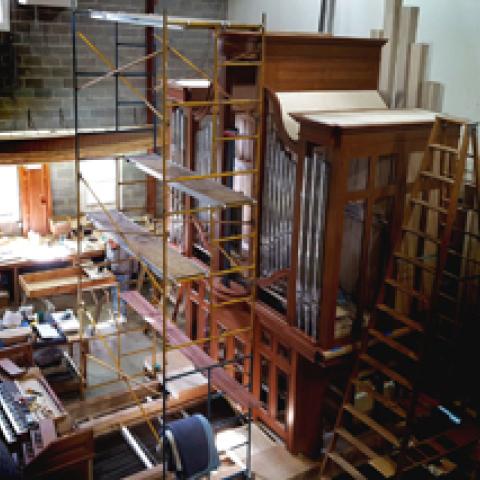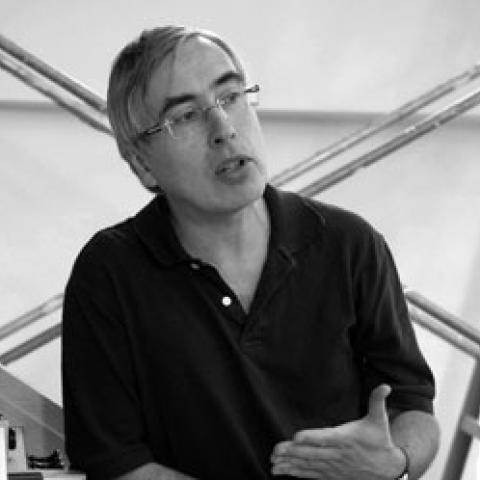The Noack Organ Co., Inc. has refurbished its Opus 98, which will be installed in Hertz Hall at the University of California, Berkeley. The instrument was originally located in Wilmington, Delaware, where it enriched worship at the Episcopal Cathedral of St. John. In November 2012 it was moved to the Noack shop in Georgetown, Massachusetts. The case was cleaned, repaired, and reinforced for its new home in earthquake-prone California. To accommodate the layout of the hall, the Positive was moved closer to the main case, and the instrument was raised several feet by means of a plinth. There was one tonal change: a new Contrabass 16′ in the Pedal division. This rank, made from white oak, was added behind the main case. All pipes in the instrument were voiced for consistency and speech, and damaged pipes were repaired as necessary.
Sigurd Øgaard played Opus 98 in its shop recital on June 22, 2013. Øgaard currently serves as organist at Palmer Memorial Episcopal Church, accompanist and organist for the Bach Society Houston, as well as instructor of improvisation and hymn playing at the University of Houston. The recital included selections by composers from Sweelinck to Sløgedal, as well as an improvisation and “congregational” hymn-singing.
For information: http://www.noackorgan.com.





